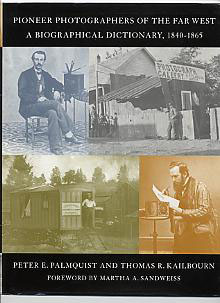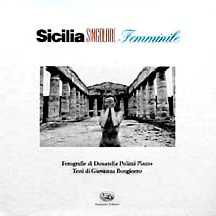 Joan
Almond
Joan
Almond
Essay by Roberto Tejada
Introduction by Karen Sinsheimer
St.
Ann’s Press is pleased to publish of the first monograph on the
photography of Joan Almond. Almond is ssecond-generation Californian
who began producing movie stills for John Cassavetes. The origins of
her interest in photography are unclear, but once she mastered camera
technique sufficient to become a photojournalist for the local newspaper,
she started the journey that has led to this remarkable book. Her self-generated
pursuit has taken her to Morocco, Algeria, and the walled city of Jerusalem,
Egypt, Thailand and India over the past two decades. All of Almond’s
photographs, in some way, show the fabric of family life and her images
show human beings with remarkable dignity and resilience, despite their
frequently impoverished personal circumstances.
Joan
Almond
ISBN: 0967174481
Hardback, 9.5 x 11 inches, 128 pages. 59 tri-tone plates
Trade Edition Price: $65.00
Reviews
BUY
Joan
Almond: The Past In The Present from Amazon.com
Joan
Almond is a WIPI CHARTER member
www.joanalmond.com

Pioneer Photographers of the Far West
A Biographical Dictionary, 1840-1865
by Peter E. Palmquist and Thomas R. Kailbourn
Foreword by Martha A. Sandweiss
Reviewed
by Carole Glauber, Copyright 2002.
Carole Glauber is a photographer, photohistorian, lecturer, and author.
Pioneer
Photographers of the Far West: A Biographical Dictionary, 1840-1865
is a fascinating window into our photographic past. With 679 pages,encompassing
territory from Alaska through Central America and areas west of the
Continental Divide, it is a huge labor of love. Authors, Peter Palmquist
and Thomas Kailbourn are independent historians who devoted seven years
of research, writing, and compiling information to create this volume.
They are planning a series of five volumes with the next one less than
a year away. Palmquist has already dedicated 30 years to his photo-historical
work, with at least 50 books and dozens of journalarticles to his credit.
This volume includes some 1500 entries about photographers or workers
engaged in photographically related pursuits. Everything about Pioneer
Photographers is useful and many aspects of it are unique. Biographical
entries are not the typical thumbnail sketches or location lists from
city directories. Rather, the entries are engrossing descriptions of
people’s lives with context and references to others whose activities
were of some influence on the given subject. Once they identified someone
as photographically related, Palmquist and Kailbourn would try to track
their entire lives. Each entry is carefully footnoted and lists sites
where researchers can locate collections of the person’s work. The authors
also followed people engaged in pre-photographic activities such as
painted panoramas as examples of pre-motion picture activity. They listed
retouchers, printers, manufacturers and sellers of photographic instruments
and stock, publishers, lithographers, and engravers.
Pioneer Photographers devotes attention to each photographer,
no matter how obscure. We read how these people lived and how their
work and professional choices affected family life. We share their successes,
failures, and struggles and meet all sorts of intriguing people engaged
in photographic pursuits. For example, readers will encounter Pietro
Mezzara, a cameo cutter or discover that quite a few people combined
dentistry and photography. There was Frederick Coombs, “daguerreotypist,
photographer, phrenologist, inventor, author, eccentric” who dressed
as George Washington. On page 55 is a photograph of Eadweard James Muybridge
dressed as a camera, preceding a section that takes a captivating look
at his life. We learn about Eliza Anderson, an ambrotypist in Santa
Rosa, California 1858-1859 and Sarah Dickens, a photographic card mounter
in San Francisco. Alfred Bierstadt, known for his grandiose paintings
also made stereographs, and from 1927-31, Ansel Adams printed postcards
from George Fiske’s negatives. Fiske(1835-1918) and his wife lived in
the Yosemite Valley for two years, making him the first photographer
to live there year-round. Another entry describes the Museum of the
Western World Institute in San Francisco in 1852. Open every evening
except Sunday, the museum presented “An exhibition...of views from the
Camera Obscura, with changes and variations of rare beauty and perfection.”
Admission was one dollar, with “no charge for ladies and museum subscribers.”
Following the alphabetical biographical entries is a section on anonymous
workers, five appendices, and an impressively comprehensive bibliography.
The first appendix contains a list of photographic partnerships, companies
and gallery names to cross reference with individual entries. Appendix
2 is a cross reference list of panoramas, stereopticons, cosmoramas,
and other public performances. A list of women workers is in Appendix
3. Readers can be assured that where there were women workers, Palmquist
has found them. Appendix 4 cites those known only as “artist” or “artiste”
since many photographers listed themselves in directories as “artist.”
Appendix 5 is a “Geographical Distribution of Workers.” The large number
of California photographers working prior to 1865 is impressive, with
the numbers in other states, Canada, Mexico, and Central America equally
interesting. Finally, the bibliography lists close to 1000 manuscript
resources, city and state directories and gazeteers, census lists, newspapers
and periodicals, books, and articles and unpublished papers.
Pioneer Photographers is indeed an authoritative text on this
subject. Palmquist and Kailbourn have assembled a monumental work that
is thorough, readable, and enjoyable at the same time as informative.
All historians of photography and western America should have a copy
of this book on their desk.
Pioneer
Photographers of the Far West: A Biographical Dictionary, 1840-1865
Stanford University Press, 2000
ISBN:0-8047-3883-1
679 pages
Buy Pioneer
Photographers of the Far West: A... from Amazon.com

Sicilia
Singolare Femminile
Photos by Donatella Polizzi Piazza
Text by Giovanna Bongiornopublished by Bonanno Editore, 1996
Reviewed
by Carrie Villines (www.carrievillines.com)
“Sicilia Singolare Femminile” celebrates the women of Sicily
by depicting a vibrant cross-section of female life in Sicily. In the
131-page photo book, which was sponsored by Leica and Ilford, Donatella
Polizzi Piazza’s images explore the women who shape and define Sicily,
while Giovanna Bongiorno’s text enhances the images by drawing a connection
between Greek mythology and modern femininity.
In her introduction, Piazza calls this “an invitation to a journey among
the women of Sicily who keep quiet only when they want to.” The women
in this book clearly open themselves to the camera, appearing more confident
than vulnerable, each conveying her own definition of femininity. Each
picture depicts a woman with something to say, whether it’s a mother
with her children or the feet of ballerinas on stage.
The images in the book share a common theme in the women depicted and
in the beautiful graininess of the black & white images. Yet as
much as the images are united by these elements, they are equally divergent
in the sheer variety of women represented - artists, teachers, mothers,
musicians, actors, artisans, school girls, gymnasts, chefs, nuns...there
are as many different women as there are images in the book. The images
are made even more unique by the environments in which these women are
represented. The backdrops vary from bedrooms to churches, hair salons
to ancient ruins, homes to stages. The types of images vary as well
- some are portraits, some candid, some are posed while others clearly
capture a singular moment in time.
Through its depiction of such diverse and interesting women, “Sicilia
Singolare Femminile” reveals the particular energy and sensuality of
Sicily as reflected by its female inhabitants.
Donatella Polizzi
Donatella Polizzi Piazza is a Professional Member of WIPI
Reconstructing
Aphrodite
photography by Terry Lorant
Introduction and Essay by Dr. Loren Eskenazi,
Forward by Dr. Susan Love
Interviews by Helga Hayse
Each
woman who is diagnosed with breast cancer is faced with her worst fears
and a sense of hopelessness that pervades her every waking moment. Often,
her anguish comes from the belief that she will no longer be attractive,
or look or feel normal again. This book offers an answer to the confusion
and fear that arises from this diagnosis.
The women portrayed are much more than their breast cancer survivors,
they are a testament to the resilience of the human spirit. They are
an example of an inner and outer beauty triumphing in the face of adversity.
Their stories are inspirational to everyone, whether or not they have
personally faced the specter of cancer.
Reconstructing Aphrodite with photos by Terry Lorant is a unique combination
of photographic and surgical artistry and the courageous stories of
women whose lives have been transformed, an intimate and visual gift
so that no woman will ever have to face this challenge alone
..You cannot help but smile as you look on these pictures; magnificent
women reclaiming their bodies and their lives - Dr. Susan Love
..The book is about much more than breast cancer. It is about renewal,
resilience, and regeneration. I want to thank everyone who has added
a piece of their heart and soul to this wonderful alchemy - Dr.
Loren Eskenazi
Verve Editions- Printed in Italy
PREVIOUS top
NEXT
Allworth Books Self-Help
Catalog

